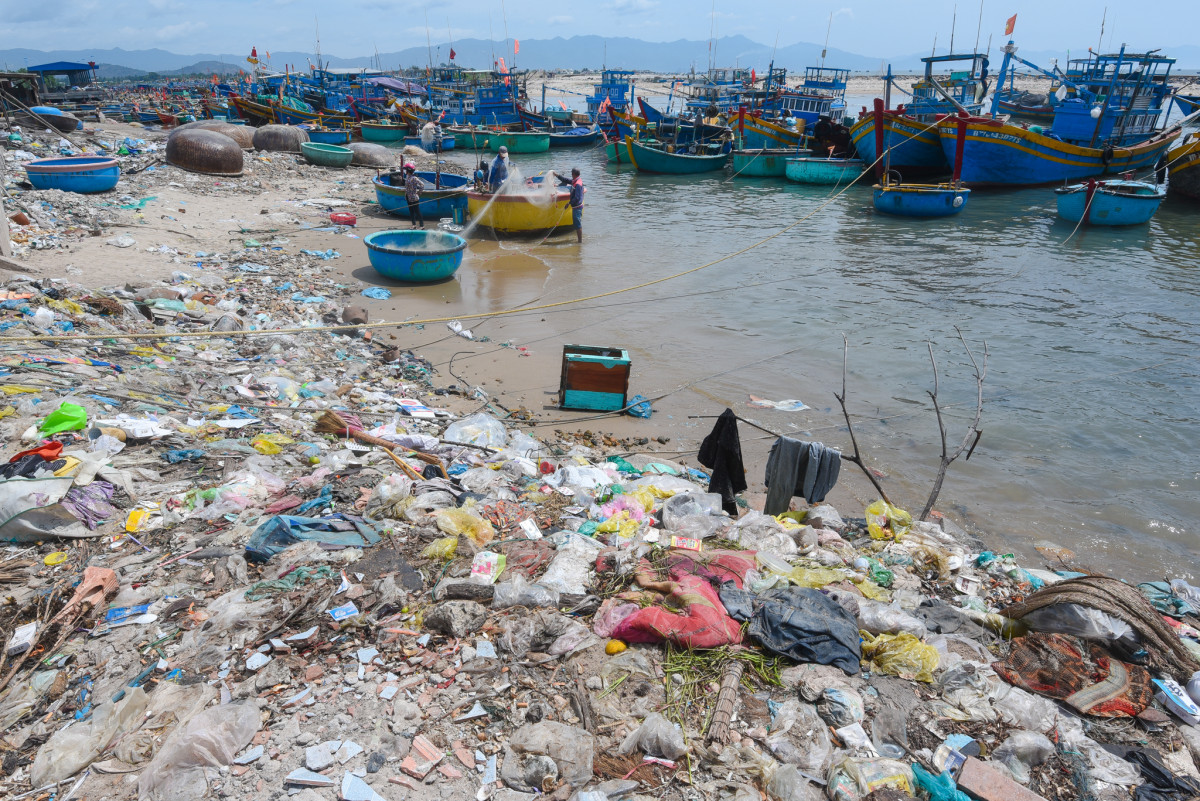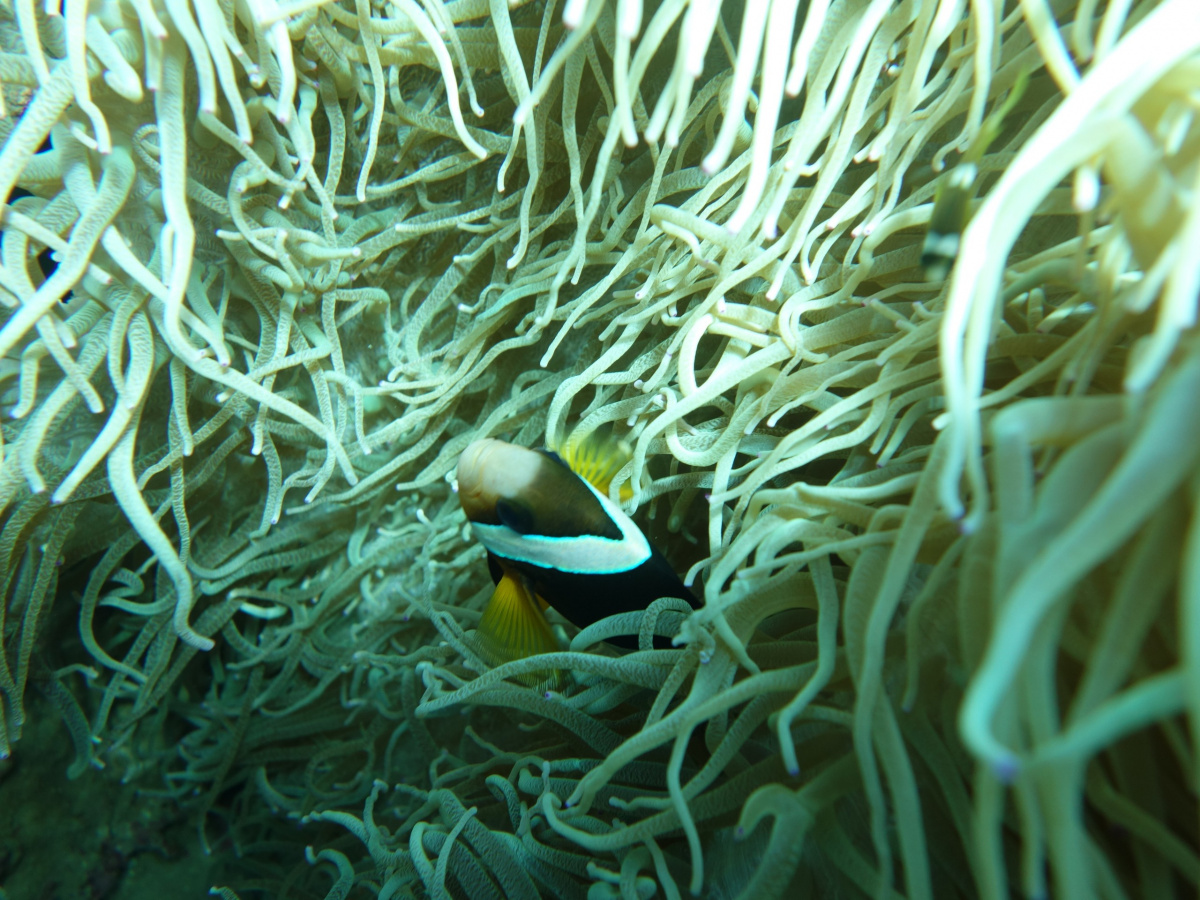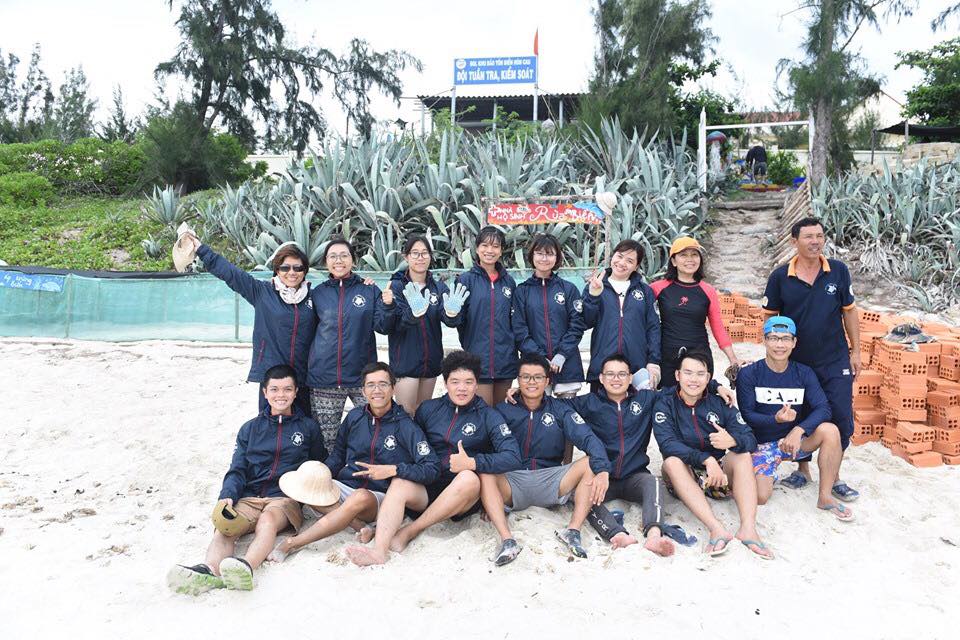Viet Nam develops action plan on reducing plastic waste of fisheries sector
On 5 February 2021, the Viet Nam Ministry of Agriculture and Rural Development (MARD) issued the Decision 687/QD-BNN-TCTS to approve the action plan on marine plastic waste management in the fisheries sector (2020 – 2030). The Decision has received high appreciation from relevant stakeholders as the fisheries sector is a pioneer in developing their first action plan to reduce plastic waste pollution. This movement has been seen as one of important milestones for the fisheries sector to take vigorous and consistent measures to reduce plastic waste pollution in the country.

Photo: Boat deck in Binh Thuan Province © Hung Lekima
The action plan aims to reduce plastic waste in fisheries production by gradually managing marine plastic waste from source to the sea, implementing a circular economy approach, developing a green economy, and raising awareness and social responsibility of farming and fishing communities, fishermen and business sector. The plan will also contribute to the successful implementation of the Decision No. 1746 / QD-TTg dated December 4, 2019 of the Prime Minister on the National Action Plan for marine plastic waste management until 2030.
Multisector participation
Developing the action plan required the cooperation of the Public-Private Partnership and multi-stakeholder participation, including the participation of IUCN Viet Nam, one of the primary partners in the partnership. In October 2019, IUCN and the Viet Nam Directorate of Fisheries (D-FISH) co-organised the first national workshop “Ocean Plastic Pollution: Action Plan of the Fisheries Sector” to discuss the development of an action plan on plastic waste management from the fisheries sector. At the workshop, a detailed report of “white pollution” in 11 MPAs by IUCN, GreenHub and WWF was presented to policy makers, and this is how IUCN sets out the priorities for the action plan to reduce plastic waste pollution in the fisheries sector.
From December 2018 to May 2019, IUCN partnered with GreenHub to develop “Guidelines on beach debris monitoring and assessment”, organised trainings, and conducted monitoring methodologies in 11 MPAs of Viet Nam. This monitoring activity was conducted with financial support from the US Fish and Wildlife Service, Marine Turtle Conservation Fund program and the Sida-funded MARPLASTICCs (Marine Plastics and Coastal Community) initiative.
Science based decision
The assessment results through two seasons of beaches debris surveyed at 33 beaches/sites (in 11 MPAs) have helped to inform the new action plan. Plastic waste found in these monitoring events made up the highest in quantity (92%) and weight (64.5%), followed by glass, wood, rubber, cloth and metal. Types of plastic waste varied depending on the economic and tourism development in each area, but notably polystyrenes, fishing nets, and ropes were the most common types of pollution. Therefore, in addition to strengthening policies to govern single-use plastic products, it was deemed necessary to have adequate studies and appropriate solutions to reduce the amount of plastic waste from the fisheries sector to the environment.
IUCN support
In the coming months, along with other partners, IUCN, through the MARPLASTICCs initiative is committed to providing technical and financial support to enforce the priorities in the action plan. Some major activities include continuing the beach debris monitoring and assessment programme in 11 MPAs for the 3rd year; conducting trainings on the techniques to dismantle ghost fishing nets in coral reef and sea grass areas; and collecting data on ghost fishing nets and providing inputs for the policy-making process.
With the creation of this action plan, the leadership of the Government of Viet Nam and the participation of relevant stakeholders, it is hoped that the fisheries sector in Viet Nam will be more sustainably developed and the tragedy of more plastic than fish by 2050 will not happen.
For details of the action plan and Decision, pls. CLICK HERE



